Sorted by date Results 1 - 25 of 132
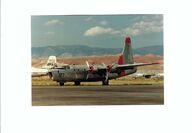
Established in 1953, Pacific Aeromotive Corporation was formed at Burbank, California, to modify Lockheed Lodestars to Learstar executive transports. It also modified T-28As to the more powerful Nomad configuration and working with Allison, designed, certified, and converted Convair 340s and 440s to the turboprop 580. One of Pacaero's most extensive conversions was the upgrading of the classic Beech 18, which first flew on 15 January 1937. Built with a confusing variety of designations for...
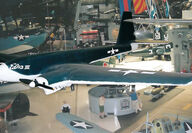
The Interstate Aircraft & Engineering Corporation was formed in April 1937 to manufacture aircraft parts and systems for other companies. Based at El Segundo, CA, it built hydraulic equipment, bomb shackles, and gun chargers. In 1940, it produced a two-seat light cabin monoplane called the Cadet. Development of television and the radar altimeter encouraged the Navy to investigate design and production of a remote-control bomb, which under the guidance of John Kean of the Naval Aircraft Factory...
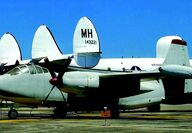
The end of WWII marked the beginning of the "Atomic Age." The Army Air Force, later the United States Air Force, finished the war with the only atomic bombing capability, the 509th Composite Group, made up of 15 Martin-built B-29s. Not to be outdone, Navy Rear Admiral Daniel Gallery proposed a Navy model for atomic bomb delivery. The initial proposal would have created a bomber too large for any existing aircraft carrier. Even the still-born CVA-58, the United States of over 80,000 tons and in...
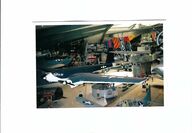
Allen H. Meyers (1908-1976) started in aviation as a sheet-metal man and worked for Vought in Long Island, Martin in Baltimore, and Stinson in Wayne, Michigan. He'd learned to fly at Curtiss Field in an OX-5 powered Jenny, and later spent time as a barnstormer. By 1936, he'd set up his own Meyers Aircraft Company in Tecumseh, Michigan. His first successful design was the Meyers OTW ("Out to Win") that was manufactured for the Civilian Pilot Training Program established under the Civil...
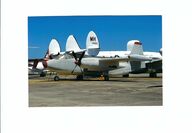
Some aircraft companies created airliners or cargo haulers based on bombers. Boeing is a good example of this, as is Avro. The Boeing B-17 begat the Model 307 Stratoliner. The Avro Lancaster begat the York and the Avro Lincoln begat the Tudor. One of the most prolific families from Boeing, began with the B-29. From the B-29 came the B-50 via the re-engined XB-44. Also in this family, came the R-3350 powered XC-97 during WWII, which evolved into the production C-97/ KC-97 series with R-4360...
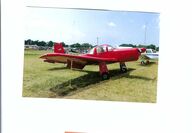
In 1941, movie goers were introduced to Warner Brothers' "Dive Bomber" directed by Michael Curtiz. Starring Errol Flynn, Fred MacMurray, and Ralph Bellamy, with major flying scenes by Paul Mantz, it depicted, Hollywood style, pre-WWII USN dive bomber operations. Europe had already been introduced to the real thing in 1939 when Germany invaded Poland. In early WWII battles, dive bombers, operating under an umbrella of air superiority seemed unbeatable. The Junkers Ju-87 Stuka led the blitzkrieg...
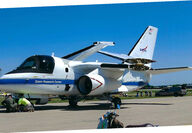
The use of aircraft to combat submarines began in WWI with the deployment of flying boats and airships to counter German U-Boats. Similar operations evolved during WWII, but with even longer ranged bombers to challenge the new brand of U-Boats that roamed the oceans world-wide. Land-based aircraft predominated at the beginning of the war, but carrier-based aircraft, using the smaller escort carriers ("jeep carriers") and squadrons of hunter-killer teams, backed up by intelligence gathered about...

I'm sure many Flyer readers can identify with aircraft built by Aeronca or the later Champions, Citabrias, and Decathlons that evolved from Aeronca designs. The Aeronautical Corporation of America (Aeronca) was founded in November 1928 at Cincinnati, Ohio, and became the first United States factory to produce a commercially successful light sport aircraft. Backed by money from the Taft family (think a U.S. Senator and a Supreme Court Justice), Aeronca produced over 17,400 aircraft until...
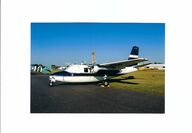
The Aero Commander family got its start in 1944 when Douglas designer Ted R. Smith (1906-1976) and a group of Douglas A-20 engineers created a design for what became the first all metal twin-engine business aircraft. They formed the Aero Design and Engineering Company to produce the prototype, NX1946, powered by a pair of Lycoming O-435 piston engines. With a layout similar to the Douglas A-20 Havoc light bomber, NX1946, designated the L3805, first flew on 23 April 1948. After leaving Douglas,...
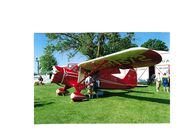
The Stinsons were early American aviators. Sisters, Katherine and Marjorie, were exhibition pilots before WWI and the brothers, Eddie and Jack, ran a flying school in Texas before American entry into The Great War. Eddie (1893-1932) moved to Detroit and produced his first commercial aircraft, the biplane Detroiter in 1926. Northwest Airlines began with three SB-1 Detroiters. By 1927, with a need for more space, Stinson moved to Wayne, Michigan. Of the pre-WWII Stinsons, the SR series was...
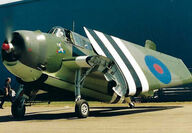
The alarm interrupted the smoke jumper presentation "Ladies and gentlemen, please move to the side of the room, we have an alert." Obediently, we tourists moved to the side as the jumpers accessed their gear and exited. Once they were out of the building, we were allowed to go outside to the edge of the ramp upon which a CASA 212 and a venerable C-47A (N100Z) in United States Forest Service white and red awaited with engines already starting to turn over. Behind me I heard big radial engines,...
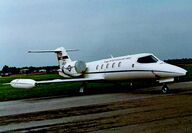
The iconic Learjet is one of the most well-known and best-selling business aircraft in history. Bill Lear's design was inspired by the Swiss FAA P-16 combat aircraft of 1955. Proposed by Flug-und-Fahrzeugwerke to replace the Swiss Air Force's piston engine aircraft, the P-16 flew in April 1955. After a series of accidents, further development was abandoned. Lear (1902-1978) saw the basic concept, particularly the wing with tip tanks, as worthy of development into a small jet transport. Initial...
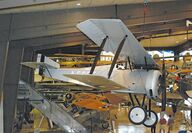
During WWI, artillery spotting was of prime importance. Both sides used tethered observation balloons. Stopping your opponent's ability to chart your positions was one of the most dangerous jobs for fighter pilots. The German drachens were not armed, but the hydrogen filled gas bags were surrounded by anti-aircraft guns (which the British called "Archie") and protected by fighters. The most successful ace against the drachens was Belgian pilot Willy Coppens (1892-1986), who shot down 35...
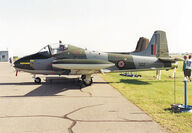
The Hunting Jet Provost series was designed to replace the 550 hp Alvis Leonides radial engine Provost basic trainer for the RAF. The BAC 167 Strikemaster evolved from the Jet Provost as a light strike/close support aircraft, mostly for export. The prototype Jet Provost first flew on 26 June 1954 powered by a 1750 pound thrust Viper turbojet. The RAF's all jet training syllabus began with the Jet Provost Mk. 1, when it served with RAF Flying Training Command, starting in August 1955. Subsequent...

Although it has appeared under multiple company names, the Kitfox can claim over 7000 kits sold in over 40 countries. Capable of flying off wheels, skis, or floats, the Kitfox's wings can be folded to allow storage in your garage and towing behind your car. A side-by-side two-seater, it possesses excellent STOL performance, and has appeared in tricycle as well as tailwheel models. First appearing as the Denney Kitfox and flown in November 1984 from the Denney factory in Boise, Idaho, the design...
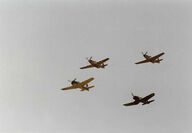
"Now Lieutenant," Randy often said. "You know you've been in aviation a long time, when the list of people you knew, is longer than the list of people you know." When he first said that to me over three decades ago, I didn't fully appreciate what he meant. Now, after announcing aviation events since 1991, I understand his message. Randy Sohn, and many others, all part of my aviation experience and life, have "Gone West." It was Al Pike at Planes of Fame-East, who first handed me a mic. As show...
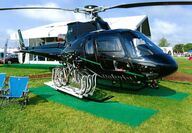
Developed by Aerospatiale as a replacement for the 1950's vintage Alouette II, the Ecureuil was designed for civilian and military use. First flying on 27 June 1974 with a Lycoming LTS turboshaft engine at Marignane, France, the AS 350 has evolved into what some sources say is Europe's most successful helicopter. A second prototype with a Turbomeca Arriel followed on 14 February 1975, and with French and later American certification, deliveries to customers began in March 1978. Production has...
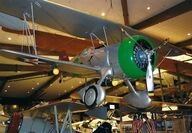
The Curtiss Hawk series of fighters began with the Army's PW-8 (PW = Pursuit Water-Cooled) in 1924, and evolved from the P-1 to the P-6. The Navy followed with land and carrier-based models called the F6C. While the Army continued with liquid-cooled inlines, the Navy moved to the F6C-4 with air-cooled radials. The peak of the Curtiss models was the F11C, later re-designated BFC, for dive bombing. On 18 October 1932, the Navy let Contract #28847 to Curtiss for 28 production F11C-2...
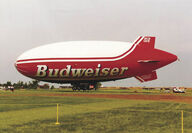
The non-rigid airship, or blimp, came into its own during World War I with the Royal Naval Air Service use of Sea Scout, Sea Scout Zero, North Sea, and Coastal non-rigid airships for convoy escort, anti-submarine patrol, and coastal reconnaissance. After the Great War, use of blimps expanded, including their use in advertising. In 1925, Goodyear got into the act with the non-rigid ship Pilgrim, which pioneered the use of an enclosed cabin attached to the airship's envelope. It also was inflated...
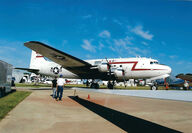
"Of all the famous people you've interviewed in your three decades of airshow announcing, who was your favorite?" She was a serious high school senior working on a paper about World War II flyers. One had been her grandfather. We were sitting at the picnic table in Golden Wings hangar surrounded by Greg Herrick's fabulous collection of vintage airplanes. It was true. I'd interviewed many "names" in aviation and aerospace. The one that stood out the most I met for the first time at the Minnesota...
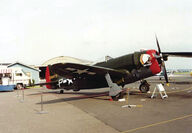
Editor's Note: This new Minnesota Flyer series memorializes the state's current or past aviation museums and collections. For some of the long-gone museums and collections, it should be a nostalgia trip. Contributing writers have identified as many as 20 museums and collections and will present each in a separate article. Founded by Bob Pond (1924-2007), a Minnesota industrialist who used aircraft in his business, Planes of Fame – East rose in the early 1990s to become one of the premier c...
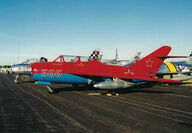
During WW II, the Red Air Force realized the importance of having dual-control fighter trainers. Thus, production versions of the Polikarpov I-16UTI, Lavochkin La-5UTI and La-7UTI, and the Yakovlev Yak-7V were built to provide transition training for front line pilots. Each of these, over 1,600 Polikarpov I-16UTI's for example, gave new pilots the chance to experience the flight characteristics of front-line combat aircraft before they met the Luftwaffe. Dual-control fighter trainer development...
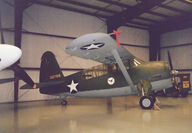
Military aviation began before WWI with an emphasis on observation of the enemy. A large number of "two-seaters" emerged during the Great War to be the eyes of the army. Post war, the United States and other nations continued to depend on large, relatively slow aircraft that would make good targets for fast, heavily armed fighters. One of the last of these for the United States was the Curtiss O-52 Owl. Ordered to U.S. Army Air Corps specification W-535-ac-13362 on 12 October 1939, 203 Curtiss...
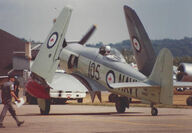
"And now ladies and gentlemen, from your right, keep your eyes on the landing lights and the wing tip smoke generators. Cameras ready! Let's rock and roll with Commander Curt Brown and the vortex demo! This is Sawbones!" Longtime readers of the Minnesota Flyer know that since 2009, I've crewed on and written about a Hawker Sea Fury named Sawbones that races at Reno. Courtesy of Dr. Robin Crandall, I've been privileged to participate in and cover what is called the "World's Fastest Motor Sport."...
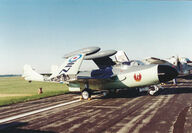
The de Havilland company got into the jet business with the Goblin powered Vampire. Initially called the Spider Crab, the prototype first flew on 20 September 1943. Too late for service in WWII, 2,928 Vampires were built in the UK, India, Italy, Switzerland, Australia, and France. The need to improve the breed resulted in the Venom in 1949. Using the more powerful Ghost turbojet, thinner wings with a slight leading edge sweep, and wing tip tanks, the prototype first flew on 2 September 1949....